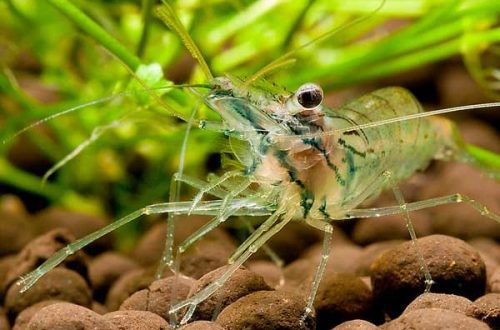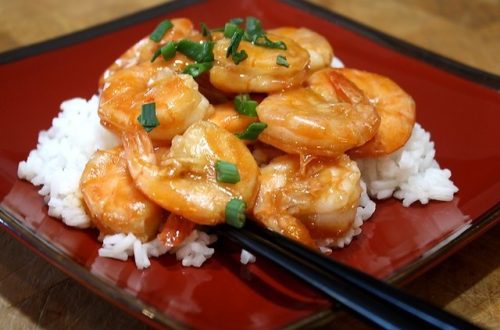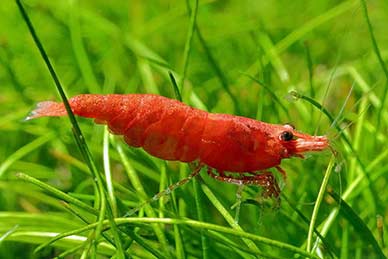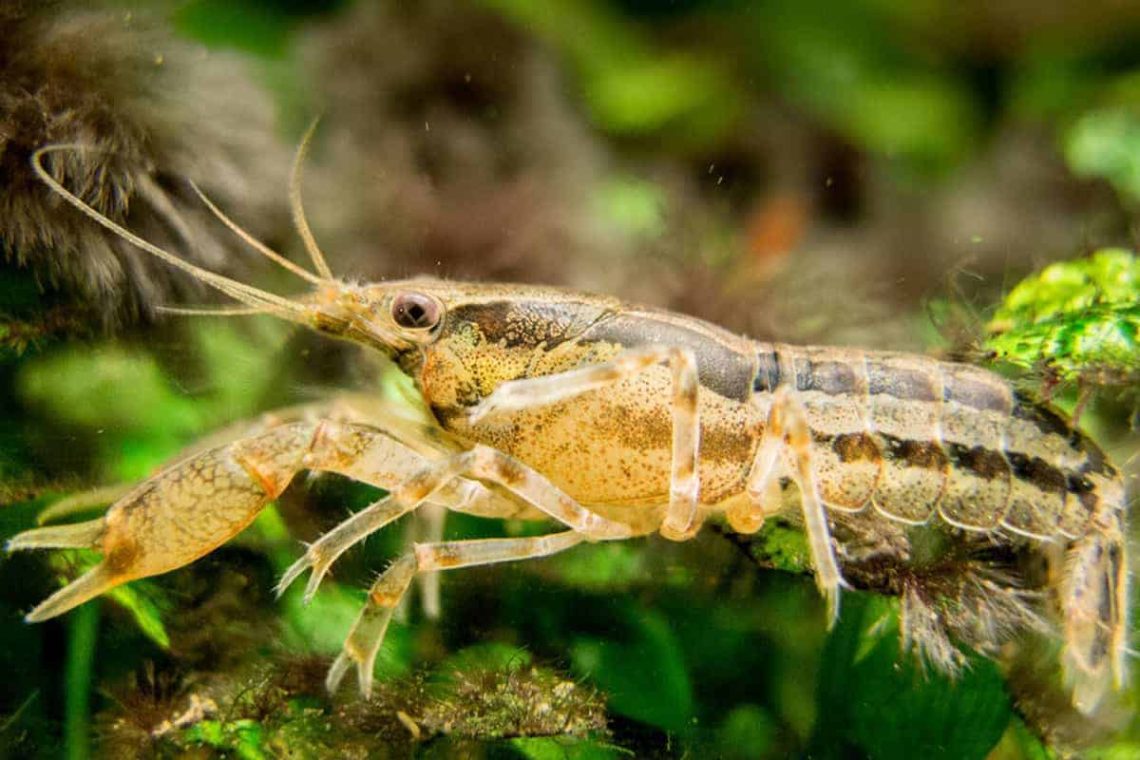
cancer painted
Painted crayfish, scientific name Cambarellus texanus. In the wild, it is on the verge of extinction, but in aquariums it has gained great popularity, which contributes to the conservation of this species.
It is quite hardy and withstands significant fluctuations in water parameters and temperature. In addition, these crayfish are relatively peaceful and easy to breed in freshwater aquariums. Considered an excellent choice for beginner aquarists.
Contents
Habitat
The homeland of the Painted Cancer is North America, the territory of the states on the coast of the Gulf of Mexico. The largest population is in Texas.
A typical biotope is a small body of stagnant water with many plants. In the dry season, during a strong shallowing or drying up of the reservoir, they go into deep holes dug in advance in the depths under the shore.
Description
Adults are only 3-4 cm long and are comparable in size to dwarf shrimp such as Crystals and Neocardines.
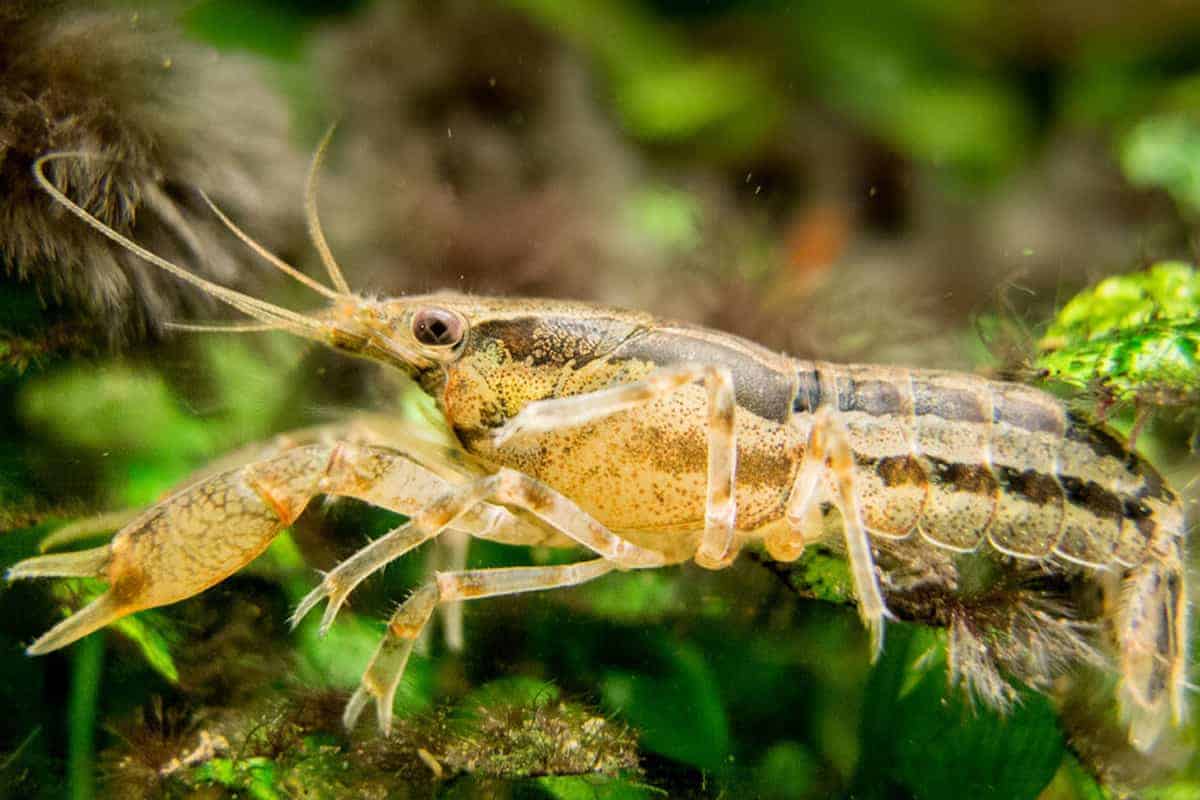
This cancer has many beautiful curved, wavy, and dotted lines. The belly has a pale olive ground color patterned with a wide light stripe with dark edging.
There is a well-marked dark spot in the center of the tail. Tiny dots are visible throughout the body, which form many patterns and color variations.
The decorated crayfish has graceful oblong and narrow claws.
Life expectancy is 1,5–2 years, but it is known that under optimal conditions they live even a little longer.
Shedding occurs regularly. Adult crayfish change the old shell up to 5 times a year, while juveniles renew it every 7–10 days. For this period, they hide in shelters until the integument of the body hardens again.
Behavior and Compatibility
Although they are considered peaceful, but this is relative to the closest relatives. They are characterized by territorial behavior and they will protect their site from encroachment. The results of skirmishes can be sad. If the crayfish are crowded in the aquarium, they themselves will begin to “regulate” their numbers by destroying weaker individuals.
Thus, it is recommended to keep one or two crayfish in a small tank. It is acceptable to stay together with ornamental fish.
It is worth avoiding settlements with aggressive predatory fish, as well as with large bottom dwellers, such as catfish and loaches. They can be dangerous for such miniature crayfish. In addition, he can perceive them as a threat and will defend himself in ways available to him. In this case, even peaceful large fish can suffer (fins, tail, soft parts of the body) from its claws.
There are many opposing points of view regarding compatibility with shrimp. Probably the truth is somewhere in the middle. Given promiscuity and territorial behavior, any small shrimp, especially during the molting period, will be considered a potential food. As compatible species, large species can be considered that are noticeably larger than the Painted Crayfish. For example, Bamboo shrimp, Filter shrimp, Amano shrimp and others.
Features of the content
The size of the aquarium is selected based on the number of crayfish. For one or two individuals, 30-40 liters is enough. In the design, it is imperative to use soft sandy soil and provide for several shelters made of snags, tree bark, heaps of stones and other natural or artificial decor.
With a high degree of probability, crayfish will change the internal landscape, digging in the ground and dragging light design elements from place to place. For this reason, the choice of plants is limited. It is recommended to place plants with a strong and branched root system, as well as to use species such as Anubias, Bucephalandra, which can grow on the surface of snags without the need to plant them in the ground. Most aquatic mosses and ferns have a similar ability.
Water parameters (pH and GH) and temperature are not significant if they are in the acceptable range of values. However, the water quality (absence of pollution) must be consistently high. It is recommended to replace part of the water with fresh water weekly.
Crayfish do not like a strong current, the main source of which are filters. The best choice would be simple airlift filters with a sponge. They have sufficient performance and prevent accidental suction of juvenile crayfish.
Optimal conditions of detention
General hardness – 3–18°GH
Value pH — 7.0–8.0
Temperature — 18–24°С
Food
They eat everything they can find at the bottom or catch. They prefer organic food. The basis of the diet will be dry, fresh or frozen daphnia, bloodworms, gammarus, brine shrimp. They can catch a weakened or large fish, shrimp, relatives, including their own offspring.
Reproduction and breeding
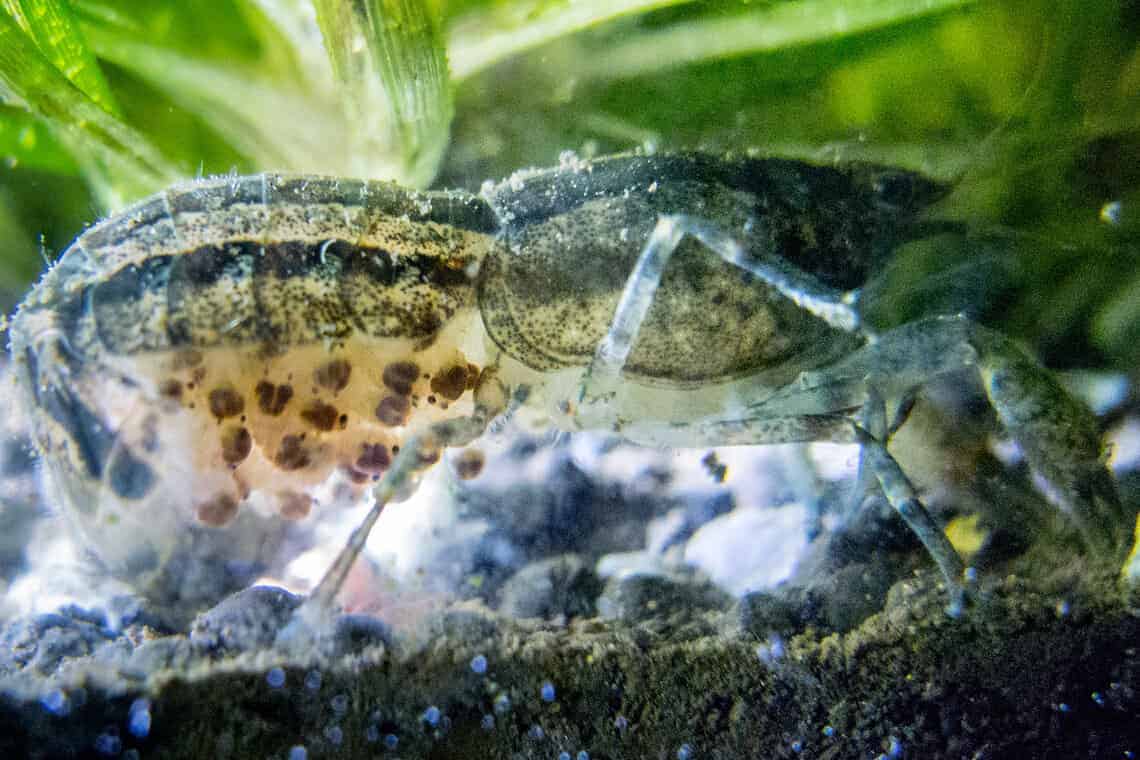
In an aquarium, where there are no pronounced seasonal changes in the habitat, crayfish themselves determine the onset of the breeding season.
Females carry clutch with them under the abdomen. In total, there can be from 10 to 50 eggs in a clutch. The incubation period lasts 3 to 4 weeks depending on the water temperature.
After hatching, the juveniles continue to be on the body of the female for some more time (sometimes up to two weeks). Instincts force the female to protect her offspring, and the juveniles to be near her for the first time. However, when the instinct weakens, she will certainly eat her own offspring. In the wild, by this time, young crayfish have time to go to considerable distances, but in a closed aquarium they will have nowhere to hide. Until the moment of birth, the female with eggs should be placed in a separate tank, and then returned back when the juveniles become independent.



